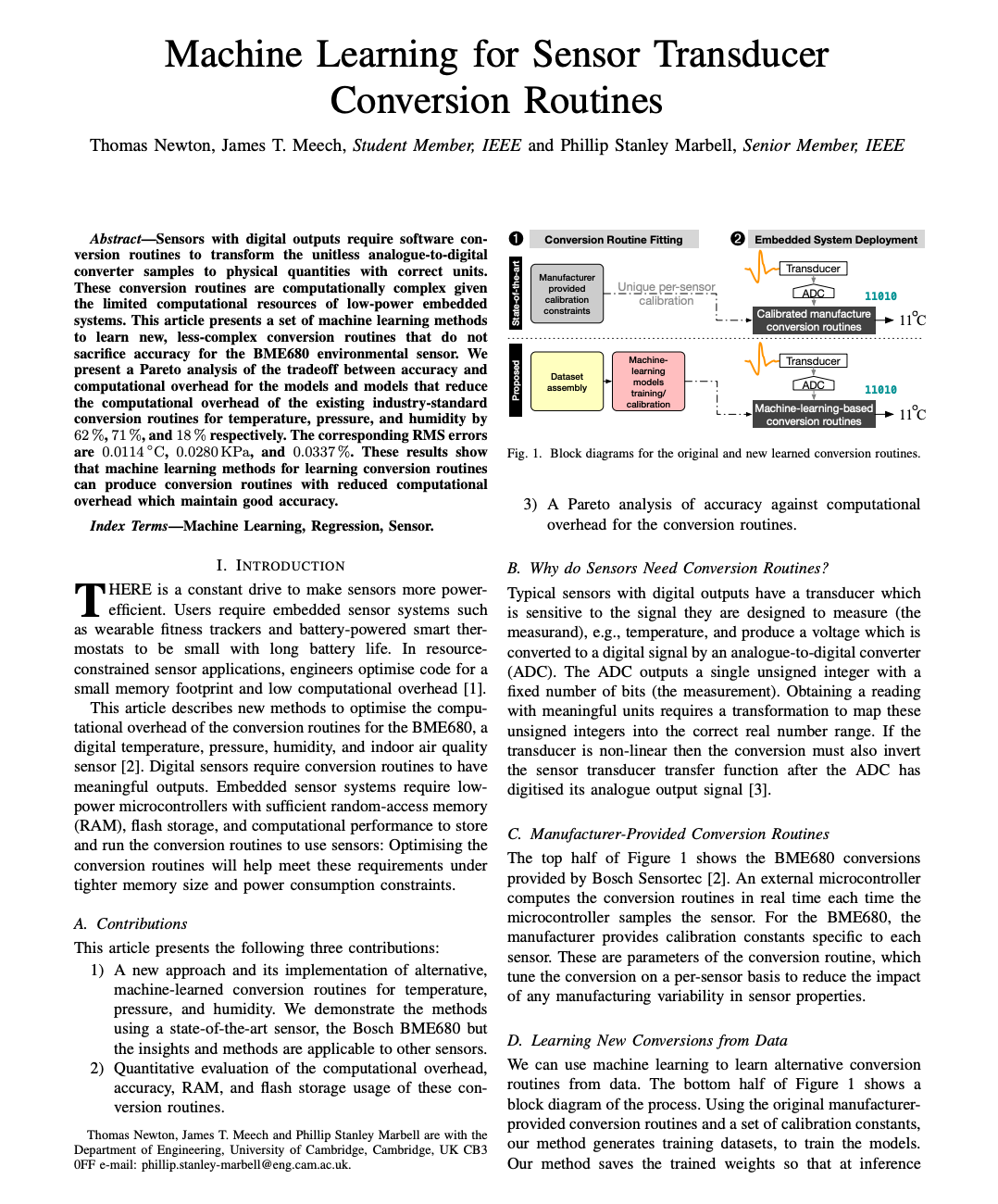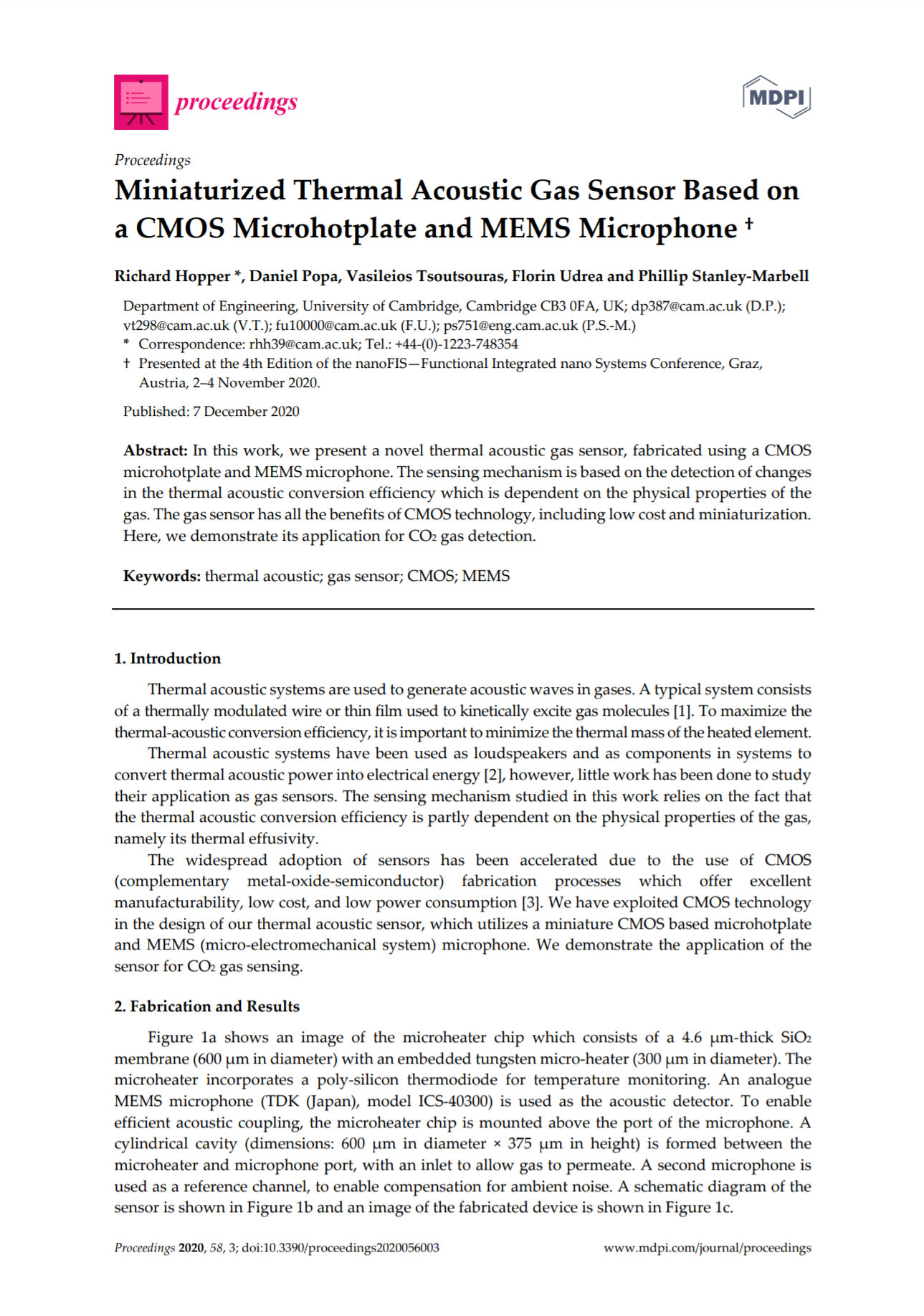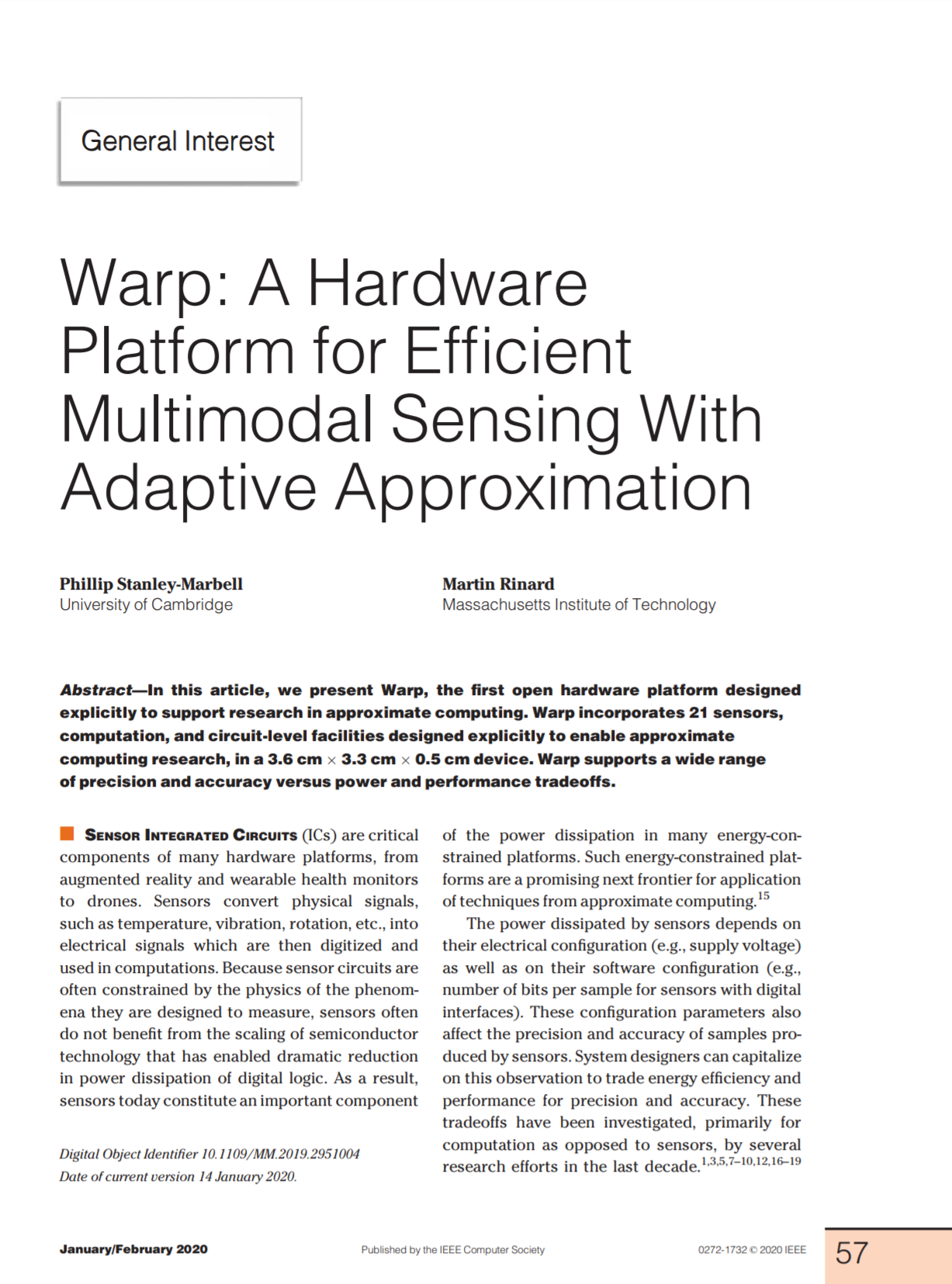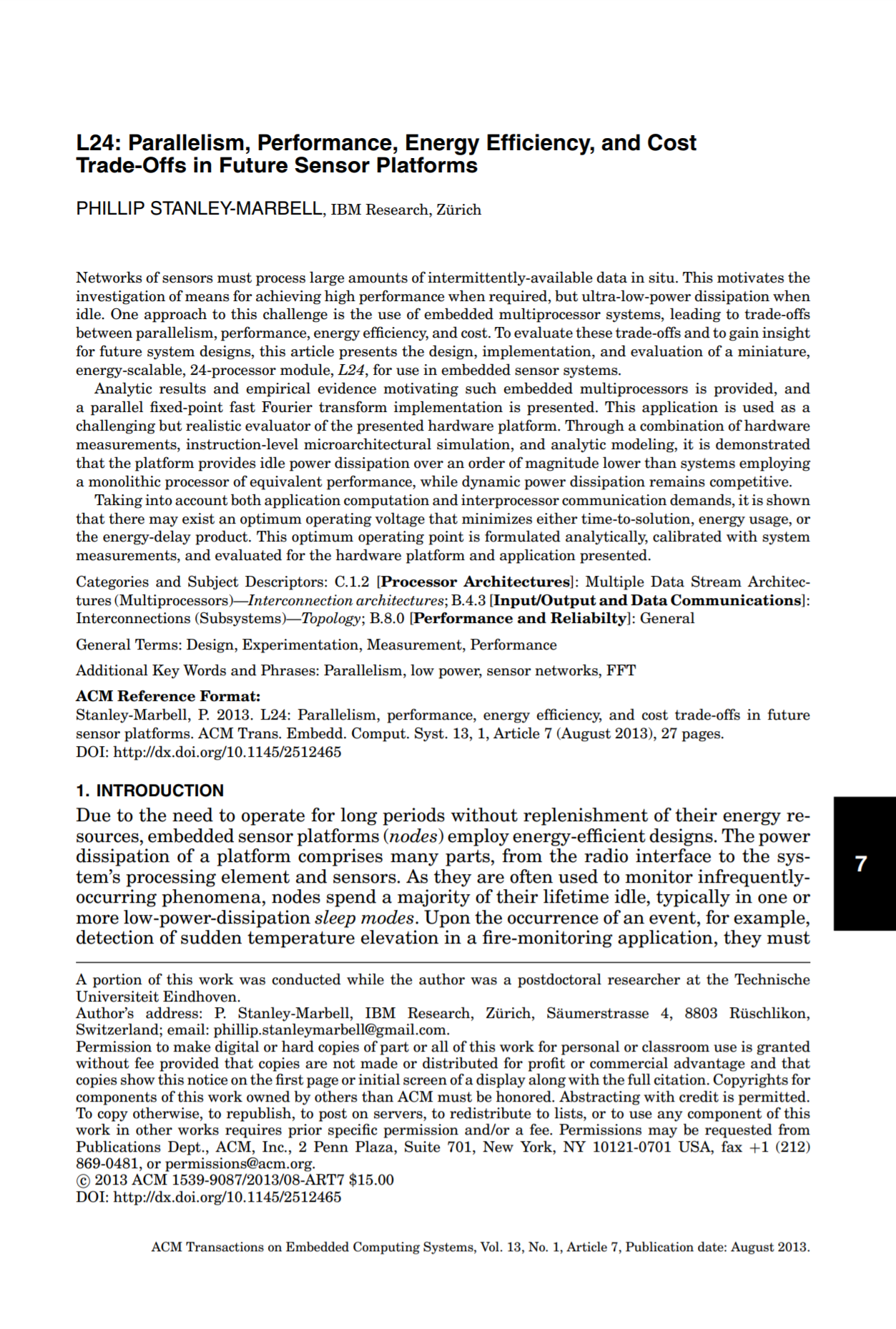Modeling, analysis, and self-management of electronic textiles
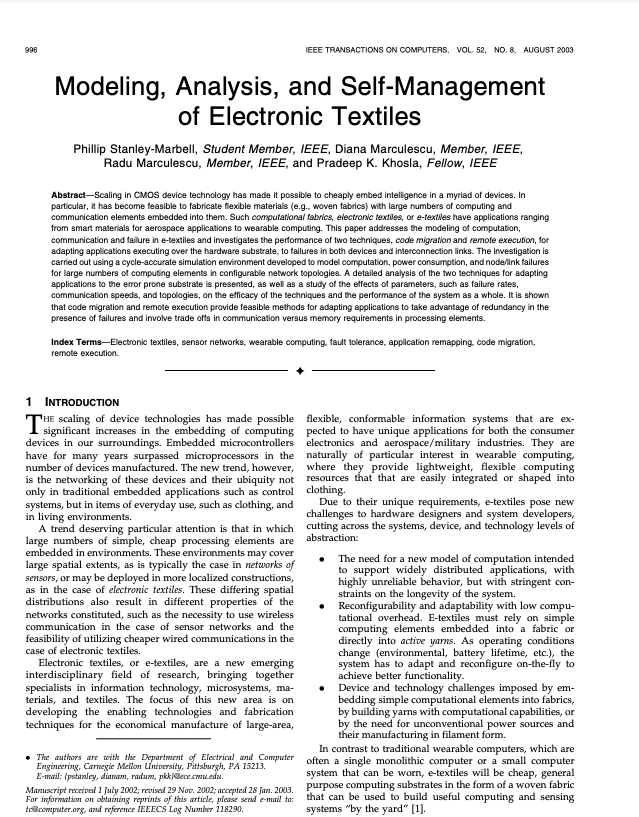

Abstract:
Scaling in CMOS device technology has made it possible to cheaply embed intelligence in a myriad of devices. In particular, it has become feasible to fabricate flexible materials (e.g., woven fabrics) with large numbers of computing and communication elements embedded into them. Such computational fabrics, electronic textiles, or e-textiles have applications ranging from smart materials for aerospace applications to wearable computing. This paper addresses the modeling of computation, communication and failure in e-textiles and investigates the performance of two techniques, code migration and remote execution, for adapting applications executing over the hardware substrate, to failures in both devices and interconnection links. The investigation is carried out using a cycle-accurate simulation environment developed to model computation, power consumption, and node/link failures for large numbers of computing elements in configurable network topologies. A detailed analysis of the two techniques for adapting applications to the error prone substrate is presented, as well as a study of the effects of parameters, such as failure rates, communication speeds, and topologies, on the efficacy of the techniques and the performance of the system as a whole. It is shown that code migration and remote execution provide feasible methods for adapting applications to take advantage of redundancy in the presence of failures and involve trade offs in communication versus memory requirements in processing elements.
Cite as:
P. S. Stanley-Marbell, D. Marculescu, R. Marculescu and P. K. Khosla, "Modeling, analysis, and self-management of electronic textiles," in IEEE Transactions on Computers, vol. 52, no. 8, pp. 996-1010, Aug. 2003, doi: 10.1109/TC.2003.1223635.
Bibtex:
@article{1223635,
author={Stanley-Marbell, P.S. and Marculescu, D. and Marculescu, R. and Khosla, P.K.},
journal={IEEE Transactions on Computers},
title={Modeling, analysis, and self-management of electronic textiles}, year={2003},
volume={52},
number={8},
pages={996-1010},
doi={10.1109/TC.2003.1223635}
}

